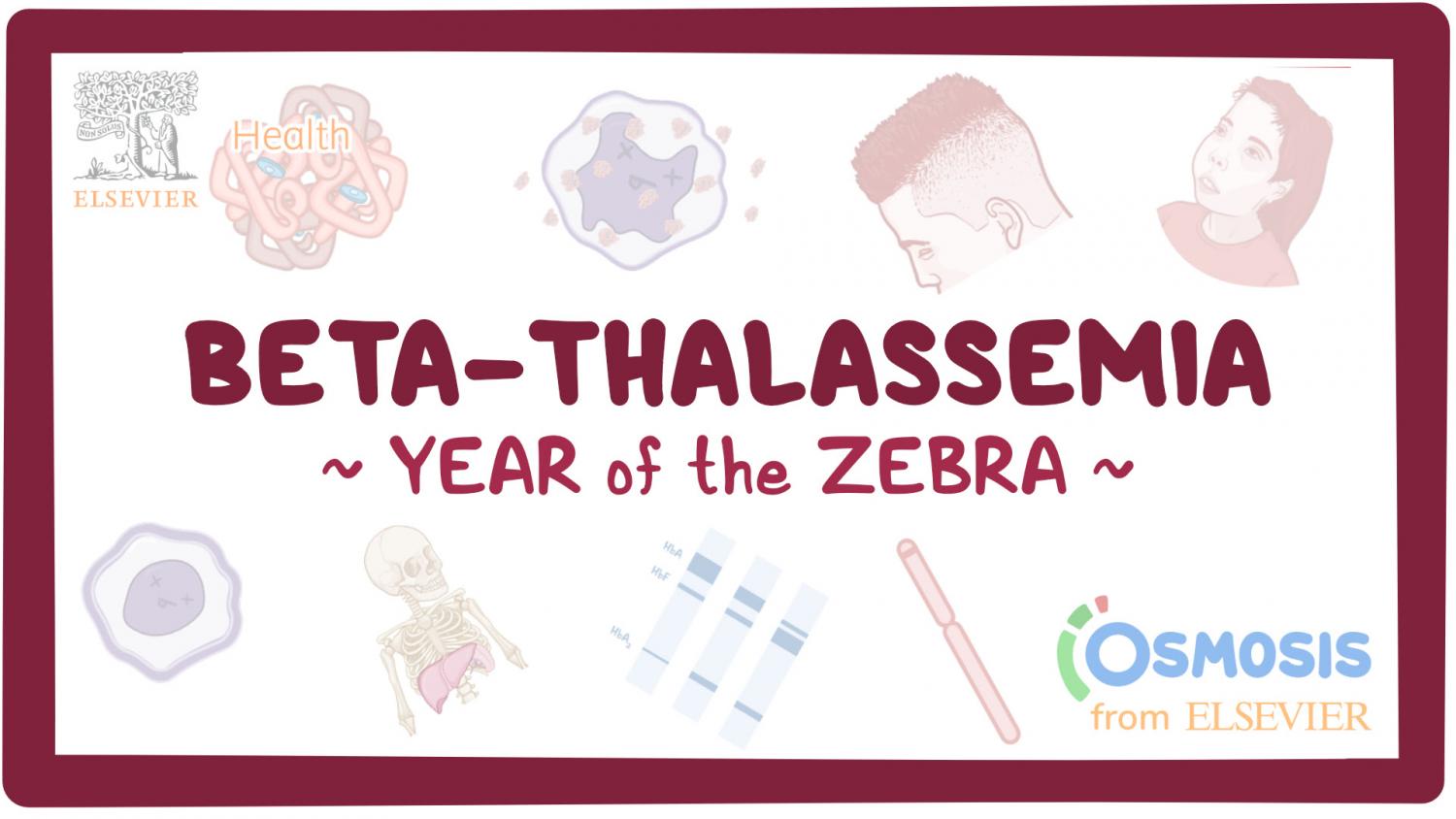
Rare Disease Education: Beta-Thalassemia
Editor: Kelsey LaFayette, DNP, RN, FNP-C
"When you hear hoofbeats, think of horses, not zebras,” is a common saying in medical education that means you should think of common conditions first, instead of rare ones, in making a diagnosis. “Rare” is a relative term though and about 7,000 rare, or "zebra," conditions affect more than 350 million individuals worldwide. Although these conditions collectively affect an enormous number of people, each of these conditions individually is rare enough that it can be difficult to secure the resources to study them and to develop treatments and cures. Likewise, awareness of rare conditions may be low and health care professionals may not be familiar with their signs and symptoms making it more difficult to reach a correct diagnosis and provide effective treatments.
To increase knowledge about rare conditions, Osmosis and the National Organization for Rare Diseases (NORD) have collaborated on an initiative to bring education and awareness to the public. We are excited to be a part of this initiative because we believe everyone deserves quality health care, no matter how rare their condition.
Zebra of the Week: Beta-Thalassemia
We may take for granted how important ground vehicles are to the flow of daily life: they transport people, deliver crucial goods, and much more. They are designed for their respective tasks efficiently, but how would these vehicles work with one or two missing wheels? This is an analogy for the fundamental problem facing patients with beta-thalassemia.
Found in our red blood cells, hemoglobin is responsible for the transport of oxygen and carbon dioxide throughout the body. Adult hemoglobin is composed of four globin chains (two alpha and two beta chains), the “wheels” of the hemoglobin vehicle. In beta-thalassemia, a mutation in the gene that gives the instructions for beta chain production occurs, resulting in faulty, inefficient, or absent beta chains. This results in the defective formation of red blood cells, a lack of functional hemoglobin, and the failure to deliver sufficient amounts of oxygen to the body.
Symptoms and severity of beta-thalassemia vary greatly from one person to another depending on the degree of impairment of beta globin chain production. In the most serious form, severe anemia develops resulting in fatigue, weakness, shortness of breath, dizziness, headaches, and jaundice. There may also be spleen and liver enlargement, and in an attempt to overcompensate for inefficient red blood cell production, the bone marrow may expand, damaging bone structure to the point of making them brittle.
Beta-thalassemia is an autosomal recessive disorder. The incidence is estimated to be approximately 1 in 100,000 individuals. The disorder is particularly prevalent in the Mediterranean basin, Africa, and Asia.
To learn more about the mechanisms and treatment of beta-thalassemia, watch the dedicated Osmosis video on YouTube and Osmosis.org
Meet Tracey Antonelli, mother of 3
As a Beta Thalassemia patient, Tracey is transfused periodically. She describes the effect this has on her and acknowledges how grateful she is to be able to live her life with others’ donated blood coursing through her. She now has three adopted daughters who also have the disorder and they live normal, happy lives. Watch her tell her heartwarming story above.
Organization Taking Strides
The Cooley’s Anemia Foundation was established in 1954 by Frank Ficarra, a young Italian-American businessman, when two of his young children were diagnosed with beta-thalassemia major, also known as Cooley’s anemia after Dr. Thomas B. Cooley, who first documented the disease. The foundation has grown into a national and international force with an impressive record of accomplishments. They have established the first medical fellowship program for thalassemia research. They support research and clinical trials through grant programs. The foundation has numerous chapters and organizes events such as a care walk, blood drives and more. They are strong policy advocates for thalassemia patients and their families. The Cooley’s Anemia Foundation is at the center of thalassemia patient support by being a platform for their expression and a source of trustworthy, up-to-date information. Visit their website to learn more about how you can support this vibrant organization.
